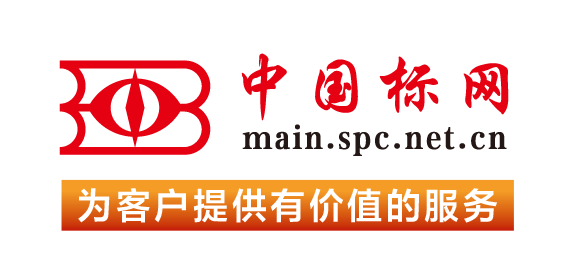This specification covers the requirements for 34 grades of titanium and titanium alloy seamless pipe intended for general corrosion resisting and elevated temperature service. Alloys may be supplied in the following conditions: Grades 5, 23, 24, 25, 29, 35, or 36 � annealed or aged; Grades 9, 18, 28, or 38 � cold-worked and stress-relieved or annealed; Grades 9, 18, 23, 28, or 29 � transformed-beta condition; and Grades 19, 20, or 21 � solution-treated or solution-treated and aged. The grades shall conform to the required chemical composition for nitrogen, carbon, hydrogen, iron, oxygen, aluminum, vanadium, tin, ruthenium, palladium, chromium, nickel, niobium, zirconium, silicon, and titanium. Chemical analysis and product analysis shall be performed. Mechanical requirements shall conform to the required room temperature values for tensile strength, yield strength, and elongation. The following shall also be performed: tension, flattening, bend, and hydrostatic tests.1.1 This specification covers the requirements for 34 grades of titanium and titanium alloy seamless pipe intended for general corrosion resisting and elevated temperature service as follows:1.1.1 Grade 1—UNS R50250. Unalloyed titanium,1.1.2 Grade 2—UNS R50400. Unalloyed titanium,1.1.2.1 Grade 2H—UNS R50400. Unalloyed titanium (Grade 2 with 58 ksi (400 MPa) minimum UTS),1.1.3 Grade 3—UNS R50550. Unalloyed titanium,1.1.4 Grade 5—UNS R56400. Titanium alloy (6 % aluminum, 4 % vanadium),1.1.5 Grade 7—UNS R52400. Unalloyed titanium plus 0.12 to 0.25 % palladium,1.1.5.1 Grade 7H—UNS R52400. Unalloyed titanium plus 0.12 to 0.25 % palladium (Grade 7 with 58 ksi (400 MPa) minimum UTS),1.1.6 Grade 9—UNS R56320. Titanium alloy (3 % aluminum, 2.5 % vanadium),1.1.7 Grade 11—UNS R52250. Unalloyed titanium plus 0.12 to 0.25 % palladium,1.1.8 Grade 12—UNS R53400. Titanium alloy (0.3 % molybdenum, 0.8 % nickel),1.1.9 Grade 13—UNS R53413. Titanium alloy (0.5 % nickel, 0.05 % ruthenium),1.1.10 Grade 14—UNS R53414. Titanium alloy (0.5 % nickel, 0.05 % ruthenium),1.1.11 Grade 15—UNS R53415. Titanium alloy (0.5 % nickel, 0.05 % ruthenium),1.1.12 Grade 16—UNS R52402. Unalloyed titanium plus 0.04 to 0.08 % palladium,1.1.12.1 Grade 16H—UNS R52402. Unalloyed titanium plus 0.04 to 0.08 % palladium (Grade 16 with 58 ksi (400 MPa) minimum UTS),1.1.13 Grade 17—UNS R52252. Unalloyed titanium plus 0.04 to 0.08 % palladium,1.1.14 Grade 18—UNS R56322. Titanium alloy (3 % aluminum, 2.5 % vanadium plus 0.04 to 0.08 % palladium),1.1.15 Grade 19—UNS R58640. Titanium alloy (3 % aluminum, 8 % vanadium, 6 % chromium, 4 % zirconium, 4 % molybdenum),1.1.16 Grade 20—UNS R58645. Titanium alloy (3 % aluminum, 8 % vanadium, 6 % chromium, 4 % zirconium, 4 % molybdenum) plus 0.04 to 0.08 % palladium,1.1.17 Grade 21—UNS R58210. Titanium alloy (15 % molybdenum, 3 % aluminum, 2.7 % niobium, 0.25 % silicon),1.1.18 Grade 23—UNS R56407. Titanium alloy (6 % aluminum, 4 % vanadium, extra low interstitial, ELI),1.1.19 Grade 24—UNS R56405. Titanium alloy (6 % aluminum, 4 % vanadium) plus 0.04 to 0.08 % palladium,1.1.20 Grade 25—UNS R56403. Titanium alloy (6 % aluminum, 4 % vanadium) plus 0.3 to 0.8 % nickel and 0.04 to 0.08 % palladium,1.1.21 Grade 26—UNS R52404. Unalloyed titanium plus 0.08 to 0.14 % ruthenium,1.1.21.1 Grade 26H—UNS R52404. Unalloyed titanium plus 0.08 to 0.14 % ruthenium (Grade 26 with 58 ksi (400 MPa) minimum UTS),1.1.22 Grade 27—UNS R52254. Unalloyed titanium plus 0.08 to 0.14 % ruthenium,1.1.23 Grade 28—UNS R56323. Titanium alloy (3 % aluminum, 2.5 % vanadium plus 0.08 to 0.14 % ruthenium),1.1.24 Grade 29—UNS R56404. Titanium alloy (6 % aluminum, 4 % vanadium, extra low interstitial, ELI plus 0.08 to 0.14 % ruthenium),1.1.25 Grade 33—UNS R53442. Titanium alloy (0.4 % nickel, 0.015 % palladium, 0.025 % ruthenium, 0.15 % chromium),1.1.26 Grade 34—UNS R53445. Titanium alloy (0.4 % nickel, 0.015 % palladium, 0.025 % ruthenium, 0.15 % chromium),1.1.27 Grade 35—UNS R56340. Titanium alloy (4.5 % aluminum, 2 % molybdenum, 1.6 % vanadium, 0.5 % iron, 0.3 % silicon),1.1.28 Grade 36—UNS R58450. Titanium alloy (45 % niobium),1.1.29 Grade 37—UNS R52815. Titanium alloy (1.5 % aluminum), and1.1.30 Grade 38—UNS R54250. Titanium alloy (4 % aluminum, 2.5 % vanadium, 1.5 % iron).NOTE 1: H grade material is identical to the corresponding numeric grade (that is, Grade 2H = Grade 2) except for the higher guaranteed minimum UTS, and may always be certified as meeting the requirements of its corresponding numeric grade. Grades 2H, 7H, 16H, and 26H are intended primarily for pressure vessel use.1.2 The values stated in inch-pound units are to be regarded as standard. The values given in parentheses are mathematical conversions to SI units that are provided for information only and are not considered standard.1.3 This international standard was developed in accordance with internationally recognized principles on standardization established in the Decision on Principles for the Development of International Standards, Guides and Recommendations issued by the World Trade Organization Technical Barriers to Trade (TBT) Committee.
定价: 590元 加购物车
This specification covers ferrous metal injection molded (MIM) materials fabricated by mixing elemental or pre-alloyed metal powders with binders, injecting into a mold, debinding, and sintering with or without subsequent heat treatment. These materials are: low-alloy steel produced from admixtures of iron powder and other alloying elements such as nickel and molybdenum (MIM-2200 and MIM-2700); low-alloy steel produced from admixtures of iron powder and other alloying elements such as nickel, molybdenum, and carbon (MIM-4605); austenitic stainless steel produced from pre-alloyed powder or an admixture of powders (MIM-316L); precipitation hardening stainless steel produced from pre-alloyed powder or an admixture of powders (MIM-17-4 PH); and ferritic stainless steel produced from pre-alloyed powder or an admixture of powders (MIM-430L). Chemical analysis shall be performed for the elements copper, chromium, molybdenum, and nickel. The materials shall be subjected to tensile test and unnotched Charpy impact energy test.1.1 This specification covers ferrous metal injection molded materials fabricated by mixing elemental or pre-alloyed metal powders with binders, injecting into a mold, debinding, and sintering, with or without subsequent heat treatment.1.2 This specification covers the following injection molded materials.1.2.1 Compositions: 1.2.1.1 MIM-2200, low-alloy steel1.2.1.2 MIM-2700, low-alloy steel1.2.1.3 MIM-4605, low-alloy steel1.2.1.4 MIM-4140, low-alloy steel1.2.1.5 MIM-316L, austenitic stainless steel1.2.1.6 MIM-17-4 PH, precipitation hardening stainless steel1.2.1.7 MIM-420, martensitic stainless steel1.2.1.8 MIM-430L, ferritic stainless steel1.2.1.9 MIM-440, martensitic stainless steel1.2.1.10 MIM-Cu, copper1.3 Chemical composition limits are specified in Table 1.1.4 With the exception of the values for density and the mass used to determine density, for which the use of the gram per cubic centimetre (g/cm3) and gram (g) units is the longstanding industry practice, the values in inch-pound units are to be regarded as standard. The values given in parentheses or in separate tables are mathematical conversions to SI units that are provided for information only and are not considered standard.1.5 This standard does not purport to address all of the safety concerns, if any, associated with its use. It is the responsibility of the user of this standard to establish appropriate safety, health, and environmental practices and determine the applicability of regulatory limitations prior to use.1.6 This international standard was developed in accordance with internationally recognized principles on standardization established in the Decision on Principles for the Development of International Standards, Guides and Recommendations issued by the World Trade Organization Technical Barriers to Trade (TBT) Committee.
定价: 590元 加购物车
5.1 This test method allows the nondestructive measurement of the magnetic fraction of the binder phase in cemented carbide powder materials and sintered product, and may be used as an indirect measure of the carbon level in the material or product.5.2 Measurement of magnetic saturation provides a comparison of the relative fraction of magnetic binder phase, that is, cobalt, nickel, or iron, present in the material and can be used for acceptance of product to specification.5.3 Measurement of magnetic saturation can be used as a measure of the quality of powder material.1.1 This test method covers the determination of magnetic saturation (Ms) of cemented carbide powder materials and sintered products using magnetic saturation induction test instrumentation.1.2 The values stated in SI units are to be regarded as standard. No other units of measurement are included in this standard.1.3 This standard does not purport to address all of the safety concerns, if any, associated with its use. It is the responsibility of the user of this standard to establish appropriate safety, health, and environmental practices and determine the applicability of regulatory limitations prior to use.1.4 This international standard was developed in accordance with internationally recognized principles on standardization established in the Decision on Principles for the Development of International Standards, Guides and Recommendations issued by the World Trade Organization Technical Barriers to Trade (TBT) Committee.
定价: 515元 加购物车
5.1 A need exists for accurate data on heat transfer through insulated structures at representative test conditions. The data are needed to judge compliance with specifications and regulations, for design guidance, for research evaluations of the effect of changes in materials or constructions, and for verification of, or use in, simulation models. Other ASTM standards such as Test Methods C177 and C518 provide data on homogeneous specimens bounded by temperature controlled flat impervious plates. The hot box test method is more suitable for providing such data for large building elements, usually of a built-up or composite nature, which are exposed to temperature-controlled air on both sides.5.2 For the results to be representative of a building construction, only representative sections shall be tested. The test specimen shall duplicate the framing geometry, material composition and installation practice, and orientation of construction (see Section 7).5.3 This test method does not establish test conditions, specimen configuration, or data acquisition details but leaves these choices to be made in a manner consistent with the specific application being considered. Data obtained by the use of this test method is representative of the specimen performance only for the conditions of the test. It is unlikely that the test conditions will exactly duplicate in-use conditions and the user of the test results must be cautioned of possible significant differences. For example, in some specimens, especially those containing empty cavities or cavities open to one surface, the overall resistance or transmittance will depend upon the temperature difference across the test specimen due to internal convection.5.4 Detailed heat flow analysis shall precede the use of the hot box apparatus for large, complex structures. A structure that contains cavity spaces between adjacent surfaces, for example, an attic section including a ceiling with sloping roof, may be difficult to test properly. Consideration must be given to the effects of specimen size, natural air movement, ventilation effects, radiative effects, and baffles at the guard/meter interface when designing the test specimen.5.5 For vertical specimens with air spaces that significantly affect thermal performance, the metering chamber dimension shall match the effective construction height. If this is not possible, horizontal convection barriers shall be installed inside the specimen air cavities at the metering chamber boundaries to prevent air exchange between the metering and guarding areas. The operator shall note in the report any use of convection barriers. The report shall contain a warning stating that the use of the barriers might modify the heat transfer through the system causing significant errors. For ceiling tests with low density insulations, the minimum lateral dimension of the specimen shall be at least several times the dimension of the expected convection cells.5.6 Since this test method is used to determine the total heat flow through the test area demarcated by the metering box, it is possible to determine the heat flow through a building element smaller than the test area, such as a window or representative area of a panel unit, if the parallel heat flow through the remaining surrounding area is independently determined. See Annex A8 for the general method.5.7 Discussion of all special conditions used during the test shall be included in the test report (see Section 12).1.1 This test method establishes the principles for the design of a hot box apparatus and the minimum requirements for the determination of the steady state thermal performance of building assemblies when exposed to controlled laboratory conditions. This method is also used to measure the thermal performance of a building material at standardized test conditions such as those required in material Specifications C739, C764, C1224 and Practice C1373.1.2 This test method is used for large homogeneous or non-homogeneous specimens. This test method applies to building structures or composite assemblies of building materials for which it is possible to build a representative specimen that fits the test apparatus. The dimensions of specimen projections or recesses are controlled by the design of the hot box apparatus. Some hot boxes are limited to planar or nearly planar specimens. However, larger hot boxes have been used to characterize projecting skylights and attic sections. See 3.2 for a definition of the test specimen and other terms specific to this method.NOTE 1: This test method replaces Test Methods C236, the Guarded Hot Box, and C976, the Calibrated Hot Box which have been withdrawn. Test apparatus designed and operated previously under Test Methods C236 and C976 will require slight modifications to the calibration and operational procedures to meet the requirements of Test Method C1363.21.3 A properly designed and operated hot box apparatus is directly analogous to the Test Method C177 guarded hot plate for testing large specimens exposed to air induced temperature differences. The operation of a hot box apparatus requires a significant number of fundamental measurements of temperatures, areas and power. The equipment performing these measurements requires calibration to ensure that the data are accurate. During initial setup and periodic verification testing, each measurement system and sensor is calibrated against a standard traceable to a national standards laboratory. If the hot box apparatus has been designed, constructed and operated in the ideal manner, no further calibration or adjustment would be necessary. As such, the hot box is considered a primary method and the uncertainty of the result is analyzed by direct evaluation of the component measurement uncertainties of the instrumentation used in making the measurements.1.3.1 In an ideal hotbox test of a homogenous material there is no temperature difference on either the warm or cold specimen faces to drive a flanking heat flow. In addition, there would be no temperature differences that would drive heat across the boundary of the metering chamber walls. However, experience has demonstrated that maintaining a perfect guard/metering chamber balance is not possible and small corrections are needed to accurately characterize all the heat flow paths from the metering chamber. To gain this final confidence in the test result, it is necessary to benchmark the overall result of the hot box apparatus by performing measurements on specimens having known heat transfer values and comparing those results to the expected values.1.3.2 The benchmarking specimens are homogeneous panels whose thermal properties are uniform and predictable. These panels, or representative sections of the panels, have had their thermal performance measured on other devices that are directly traceable or have been favorably compared to a national standards laboratory. For example, a Test Method C177 Hot Plate, a Test Method C518 Heat Meter or another Test Method C1363 Hot Box will provide adequate specimens. Note that the use of Test Method C518 or similar apparatus creates additional uncertainty since those devices are calibrated using transfer standards or standard reference materials. By performing this benchmarking process, the hot box operator is able to develop the additional equations that predict the magnitude of the corrections to the net heat flow through the specimen that account for any hot box wall loss and flanking loss. This benchmarking provides substantial confidence that any extraneous heat flows can be eliminated or quantified with sufficient accuracy to be a minor factor of the overall uncertainty.1.4 In order to ensure an acceptable level of result uncertainty, persons applying this test method must possess a knowledge of the requirements of thermal measurements and testing practice and of the practical application of heat transfer theory relating to thermal insulation materials and systems. Detailed operating procedures, including design schematics and electrical drawings, shall be available for each apparatus to ensure that tests are in accordance with this test method.1.5 This test method is intended for use at conditions typical of normal building applications. The naturally occurring outside conditions in temperate zones range from approximately −48 to 85°C and the normal inside residential temperatures is approximately 21°C. Building materials used to construct the test specimens shall be pre-conditioned, if necessary, based upon the material’s properties and their potential variability. The preconditioning parameters shall be chosen to accurately reflect the test samples intended use and shall be documented in the report. Practice C870 may be used as a guide for test specimen conditioning. The general principles of the hot box method can be used to construct an apparatus to measure the heat flow through industrial systems at elevated temperatures. Detailed design of that type of apparatus is beyond the scope of this method.1.6 This test method permits operation under natural or forced convective conditions at the specimen surfaces. The direction of airflow motion under forced convective conditions shall be either perpendicular or parallel to the surface.1.7 The hot box apparatus also is used for measurements of individual building assemblies that are smaller than the metering area. Special characterization procedures are required for these tests. The general testing procedures for these cases are described in Annex A11.1.8 Specific procedures for the thermal testing of fenestration systems (windows, doors, skylights, curtain walls, etc.) are described in Test Method C1199 and Practice E1423.1.9 The hot box has been used to investigate the thermal behavior of non-homogeneous building assemblies such as structural members, piping, electrical outlets, or construction defects such as insulation voids.1.10 This test method sets forth the general design requirements necessary to construct and operate a satisfactory hot box apparatus, and covers a wide variety of apparatus constructions, test conditions, and operating conditions. Detailed designs conforming to this standard are not given but must be developed within the constraints of the general requirements. Examples of analysis tools, concepts and procedures used in the design, construction, characterization, and operation of a hot box apparatus is given in Refs (1-34).31.11 The hot box apparatus, when constructed to measure heat transfer in the horizontal direction, is used for testing walls and other vertical structures. When constructed to measure heat transfer in the vertical direction, the hot box is used for testing roof, ceiling, floor, and other horizontal structures. Other orientations are also permitted. The same apparatus may be used in several orientations but may require special design capability to permit repositioning to each orientation. Whatever the test orientation, the apparatus performance shall first be verified at that orientation with a specimen of known thermal resistance in place.1.12 This test method does not specify all details necessary for the operation of the apparatus. Decisions on material sampling, specimen selection, preconditioning, specimen mounting and positioning, the choice of test conditions, and the evaluation of test data shall follow applicable ASTM test methods, guides, practices or product specifications or governmental regulations. If no applicable standard exists, sound engineering judgment that reflects accepted heat transfer principles must be used and documented.1.13 This test method applies to steady-state testing and does not establish procedures or criteria for conducting dynamic tests or for analysis of dynamic test data. However, several hot box apparatuses have been operated under dynamic (non-steady-state) conditions after additional characterization (1). Additional characterization is required to insure that all aspects of the heat flow and storage are accounted for during the test. Dynamic control strategies have included both periodic or non-periodic temperature cycles, for example, to follow a diurnal cycle.1.14 This test method does not permit intentional mass transfer of air or moisture through the specimen during measurements. Air infiltration or moisture migration can alter the net heat transfer. Complicated interactions and dependence upon many variables, coupled with only a limited experience in testing under such conditions, have made it inadvisable to include this type testing in this standard. Further considerations for such testing are given in Appendix X1.1.15 This standard does not purport to address all of the safety concerns, if any, associated with its use. It is the responsibility of the user of this standard to establish appropriate safety, health, and environmental practices and determine the applicability of regulatory limitations prior to use.1.16 This international standard was developed in accordance with internationally recognized principles on standardization established in the Decision on Principles for the Development of International Standards, Guides and Recommendations issued by the World Trade Organization Technical Barriers to Trade (TBT) Committee.
定价: 918元 加购物车
 我的标准
我的标准 购物车
购物车 400-168-0010
400-168-0010











 对不起,暂未有相关搜索结果!
对不起,暂未有相关搜索结果!













